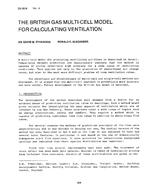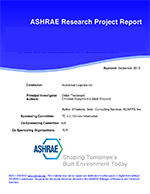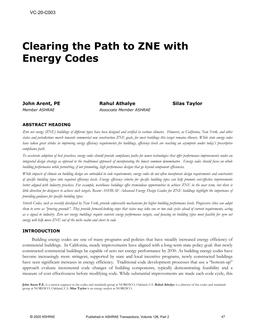The air-exchange rate is a very important parameter in characterizing a building for energy consumption and indoor air quality. Its magnitude has often been reported as a single number, with no attention paid to different values of air-exchange rates, i.e., ventilation efficiencies in different zones of a building. Although these differences may also have some influence on total energy consumption, particularly when there is a single controller for the whole building, they do have very important consequences upon indoor air quality evaluation. This is due to the fact that, in spite of an appropriate average air exchange in the building, there may be a zone or zones where the air-exchange rate is too small, thus resulting in localized pollutant. concentrations in those zones, which may be excessive.
This paper describes a multipoint tracer-gas technique that was used to quantify the air-exchange rate in different zones of various residential buildings. Zonal ventilation efficiency terms were defined and calculated, and a criterion for analysis of the results for indoor air quality evaluation is proposed.
Product Details
- Published:
- 1983
- Number of Pages:
- 11
- File Size:
- 1 file , 1.1 MB
- Product Code(s):
- D-DC-83-09-3
- Note:
- This product is unavailable in Russia, Belarus


